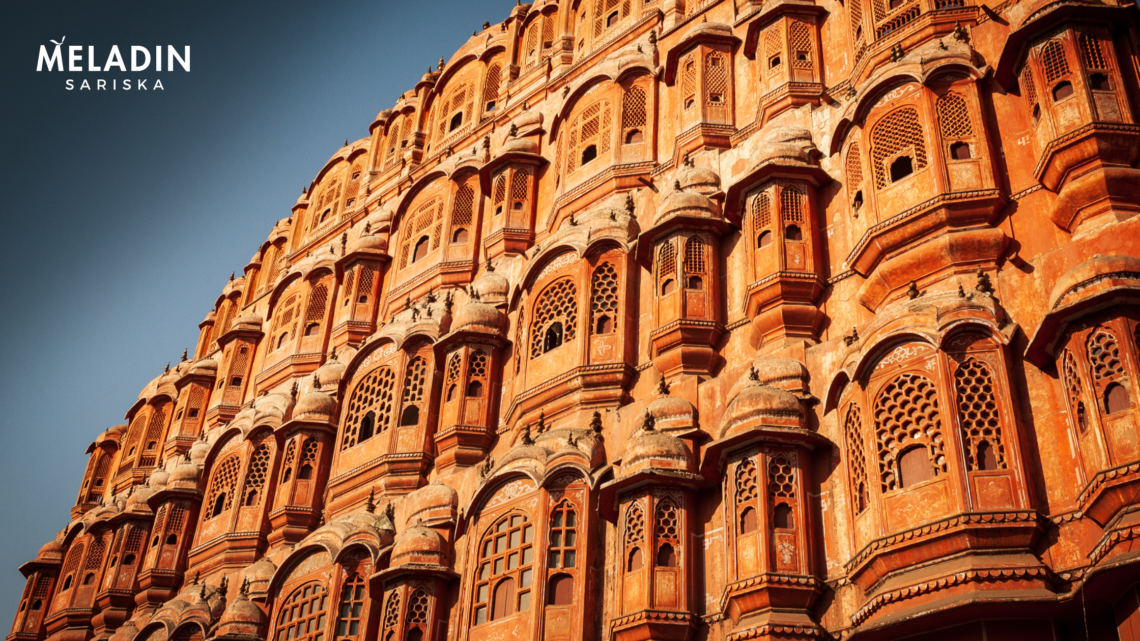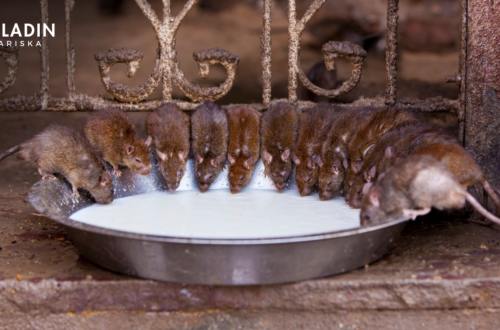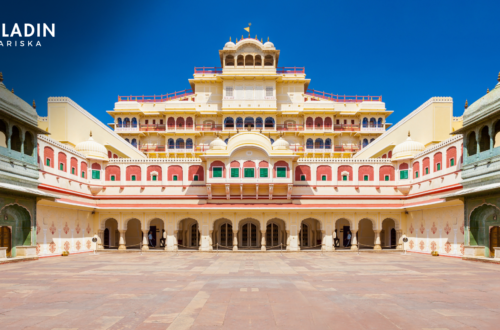Nestled in the heart of Jaipur, the Pink City of Rajasthan stands a mesmerizing architectural marvel known as the Hawa Mahal or the Palace of Winds. This iconic landmark showcases the grandeur of Rajput architecture and holds historical significance as a symbol of Jaipur’s rich heritage. In this informative article, we will explore the captivating allure of Hawa Mahal, delving into its history, architecture, and the stories that make it a must-visit destination for travellers from around the world. Moreover, for those looking to extend their exploration to the wilderness of Rajasthan, Meladin Sariska, a jungle theme resort near Sariska National Park, presents an opportunity to immerse in the natural wonders of the region.
Hawa Mahal: A Glimpse into History
Built-in 1799 by Maharaja Sawai Pratap Singh, the Hawa Mahal was designed by Lal Chand Ustad, an architect in the royal court. Its construction aimed to provide the royal ladies with a concealed vantage point to observe the bustling city life and festivities through its unique jharokhas (small windows). Understanding Hawa Mahal timings is crucial for planning your visit to this historical gem.
The Palace of Winds: A Visual Extravaganza
Hawa Mahal is renowned for its ornate facade, which resembles the honeycomb of a beehive. The intricately designed jharokhas, adorned with latticework, offer an exquisite interplay of light and air, creating a cooling effect inside the palace during scorching summers.
Architecture and Design
The architecture of Hawa Mahal is a stunning fusion of Rajput and Mughal styles. The five-story structure, shaped like a pyramid, rises to a height of 50 feet, with 953 jharokhas adorned with delicate latticework. The pink sandstone used in its construction gives the palace its distinctive hue, blending harmoniously with the pink cityscape of Jaipur.
Hawa Mahal Timings and Visitor Information
To explore the architectural splendour of Hawa Mahal, it is essential to be aware of its timings and visitor information. The palace is open from 9:00 AM to 5:00 PM on all days except Fridays, allowing visitors ample time to appreciate its historical and cultural significance.
Captivating Jharokhas: The Soul of Hawa Mahal
The jharokhas of Hawa Mahal are the highlight of its architecture. These intricately carved windows not only provided a discreet view of the city but also facilitated natural ventilation, allowing cool breezes to pass through the palace during the hot Rajasthani summers.
The Historical Significance
Hawa Mahal stands as a testimony to Jaipur’s royal legacy and its architectural finesse. The palace has witnessed the royal happenings of the bygone era, making it a treasure trove of historical anecdotes and tales, offering visitors a glimpse into the rich cultural heritage of Rajasthan.
Light and Sound Show
In the evening, Hawa Mahal comes alive with a mesmerizing light and sound show that narrates the history and legends associated with the palace and the Pink City. The show adds a touch of magic to the already enchanting ambience of the palace, enhancing the visitor experience.
Hawa Mahal Museum
The palace also houses a small museum that showcases artefacts and exhibits related to the history and culture of Jaipur, providing visitors with a deeper understanding of the region’s rich cultural heritage. The museum is a valuable addition to the overall experience of exploring this architectural wonder.
Nearby Attractions
Hawa Mahal’s strategic location allows visitors to explore other famous attractions in Jaipur, such as City Palace, Jantar Mantar, and Albert Hall Museum, all within close proximity. Visitors can plan an enriching itinerary that encompasses the diverse cultural and historical offerings of the Pink City.
The Photographic Delight
Hawa Mahal is a favourite spot for photographers and Instagram enthusiasts, offering numerous picturesque angles to capture its beauty. The palace looks particularly stunning during sunrise and sunset when the soft golden light adds a magical touch to its facade, providing ample opportunities for capturing breathtaking photographs.
Responsible Tourism
While visiting Hawa Mahal, it is essential to practice responsible tourism. Respect the historical significance of the palace, follow the rules set by the authorities, and avoid causing any damage to this architectural gem, ensuring its preservation for future generations to appreciate and admire.
Experiencing the Local Culture
Exploring Hawa Mahal also provides a chance to immerse yourself in the local culture of Jaipur. Witness the vibrant markets, try local delicacies, and engage with the warm and welcoming people of the city, allowing for a holistic cultural experience.
Meladin Sariska: A Wilderness Retreat
For nature enthusiasts and wildlife lovers, Meladin Sariska presents an ideal retreat near the Sariska National Park, offering a unique blend of luxury and wilderness experience. With its jungle-themed setting and modern amenities, Meladin Sariska provides a perfect base for exploring the diverse flora and fauna of the region. Visitors can enjoy guided safari safari, nature walks, and various recreational activities, making the most of their adventure in the heart of Rajasthan’s natural splendour.
Conclusion
Hawa Mahal stands as a magnificent testament to Jaipur’s architectural heritage and serves as a gateway to the rich history and culture of Rajasthan. Its intricately designed facade, captivating jharokhas, and historical significance make it a must-visit destination for travellers seeking to immerse themselves in the grandeur of Rajasthan’s past. Pair your visit to Hawa Mahal with a stay at Meladin Sariska to experience the best architectural splendour and natural wonders, creating memories that will last a lifetime.
So, plan your visit to the Palace of Winds and embark on a journey through time, where the architectural splendour of Hawa Mahal awaits to leave you spellbound and explore the wilderness of Rajasthan with Meladin Sariska for an unforgettable nature retreat.






